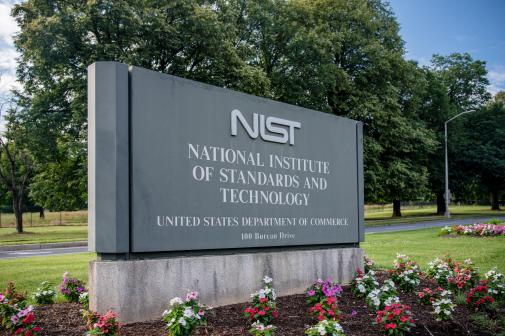Disrupt the Vote: Could tech create a new voting experience?
Imagine a day when Americans no longer need to sweat out election returns in front of their TV screens or Twitter feeds.
Tabulating votes would take only minutes — enough time for the National Security Agency to run a query on voters’ emailed ballots using a fully encrypted system. No more election night horse race coverage. No embarrassing “Dewey Defeats Truman” headlines. No more hanging chads.
The scenario may seem far-fetched, but some of these ideas were pitched by “election futurists” during a joint symposium held by the National Institute of Standards and Technology and the Election Assistance Commission. They examined the ways technology could change how Americans vote.
By all accounts, election technology is moving at a glacial pace, even by government standards. As cutting-edge technology becomes increasingly available, budgets remain low and can widely vary among municipalities. But some experts say the most crucial part of advancing election technology lies with public perception.
“Even though the technology may be solid, elections will have to deal with the perceptions of the public,” said Steve Trout, director of election innovation for election tech startup
Clear Ballot. “Until the public has confidence in the systems, it’s not a matter of how advanced we are, they are not going to accept it.”
Trout, who helped integrate tablets into elections and create an online voter registration system during his time as Oregon’s state election director, said meager budgets are going to be the ultimate factor that decides what technology is used.
“We have to create more cost-effective tools and systems,” Trout said. “We talk about innovations, but when we talk elections, we’re not the innovators. We want to use common technology.”
How to apply that common technology is also one of the most confounding things for election officials, due to the need to make voting technology accessible to those with disabilities. Melanie Bull, the public policy director for Tennessee Disability Coalition, said any tool, created from scratch or built on top of already existing products, should use input from disabled communities if it wants to see broader adoption.
“One of the interesting things about technology is people with disabilities are leaders, trendsetters and can be canaries in the mine,” Bull said. “If you can make technology work for someone with disabilities, you can work with anyone.”
Encrypting an entire election
While some experts are busy trying to find technology for elections that could be cost effective and secure, one researcher is trying to move the security aspect past the machines and into the entire election process.
Josh Benaloh, a senior cryptographer with Microsoft Research, demonstrated what an end-to-end verifiability system would look like: When a voter uses an electronic ballot box, he or she produces a paper ballot summary that is safeguarded with visual encryption or an electronic ballot that is protected with traditional encryption. A voter is then issued a encrypted receipt that matches his or her ballot to serve as proof of a ballot cast. The receipt would only serve to verify that a vote has been placed and would not hold any information about the choices a voter made.
“It’s not a receipt that shows how they voted, but still a receipt that gives confidence,” Benaloh said.
Benaloh would go on to say that deploying end-to-end verifiable election systems is “a monumental step forward,” given his opinion on how the voting process currently works with the Internet.
“Internet voting is full of risk,” he said. “We’ve seen all of the security problems that have happened with data on and even near the Internet. So there are a lot of problems to be faced. My own contention is that raw Internet voting right now is atrocious and it borders on criminal. It’s completely irresponsible.”
A new task for NSA?
So with all of the brainpower devoted to figuring out how to move elections into the next century and how to pay for it, how can the government help?
University of Florida computer scientist Juan E. Gilbert has an unconventional idea that would raise eyebrows among privacy advocates: Allow the National Security Agency to create a system that would ultimately allow for fully encrypted online voting.
Gilbert called for the NSA to possibly explore a “national center of excellence of election technology” that would work with other agencies to create a new system.

Could the NSA actually create a safe voting platform for the Internet? One professor wants to give it a shot. (Wikimedia Commons)
“If I’m an [election] commissioner, and I had NIST and EAC in the room, I’m going to go talk to the NSA,” Gilbert said. “I would ask them to help fund an initiative like this.”
Gilbert pointed to the NSA’s practice of establishing “lablets” with U.S. universities that
have focused on protective measures for the country’s Internet infrastructure. Given the NSA’s massive budget, he believes that a minuscule portion — around $3 million to $4 million — could go a long way in protecting what he feels is an important national security matter.
“I feel that elections and voting is a national security issue,” Gilbert said. “It is imperative that it has to work. Look what happened with Sony. There’s no high value in Sony, but imagine the value in being able to get the president that you want if I’m [North] Korea or China.”
Slow and steady
While panels of experts looked decades into the future, a number said that any changes to the election process in America won’t happen in one fell swoop.
Michelle Shafer, senior research associate with Council of State Governments, said while election methods may incrementally change, the process will ultimately feel the same as it ever has.
“It will continuously improve just as it has been for the last hundreds of years,” Shafer said. “I think we are going to see slower continuous improvements instead of a radical change. Just like we have electronic cars, but not flying cars.”
Watch portions of the NIST symposium on the agency’s website.






